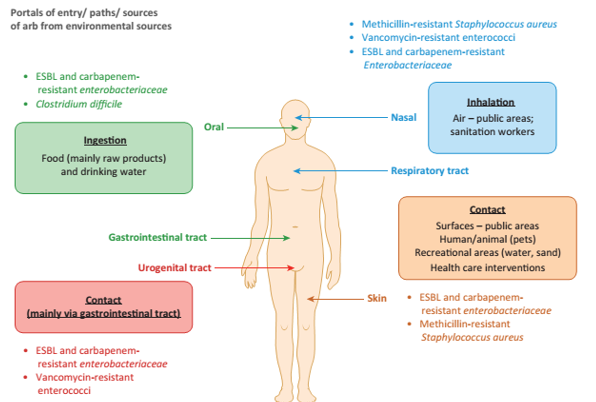Post a comment on the text below
4.2 Pathways and exposure in the environment
There is limited information on the pathways for and significance of AMR in the environment to reach humans. Because genes can be so readily transferred between microorganisms, there may be several stages involved in any pathway.
A reservoir of AMR may exist in microorganisms that rarely reach humans, but these may interact with “carriers” which readily acquire and transfer genes. These carriers can interact with “vectors” which are widespread, human associated bacteria which can pass on genes to pathogens which have high capacity to infect and cause disease. The physical routes back into humans or animals, then, are through ingestion of contaminated (raw) food and drinking water; physical contact between people/animals, or from surfaces in public areas, recreation (water, sand) or health care. The remaining way is through inhalation, where sanitation workers would be most at risk of inhaling droplets, or populations downwind of intensive farms which have been shown to be more likely to be colonised by animal associated AMR bacteria. Fig [D] provides examples of these different pathways.
Fig [D] Possible routes of transmission of AMR back into humans.

Source: Manaia, Trends Microbiol. 2017 25(3):173-181.
You cannot post comments to this consultation because you are not authenticated. Please log in.


